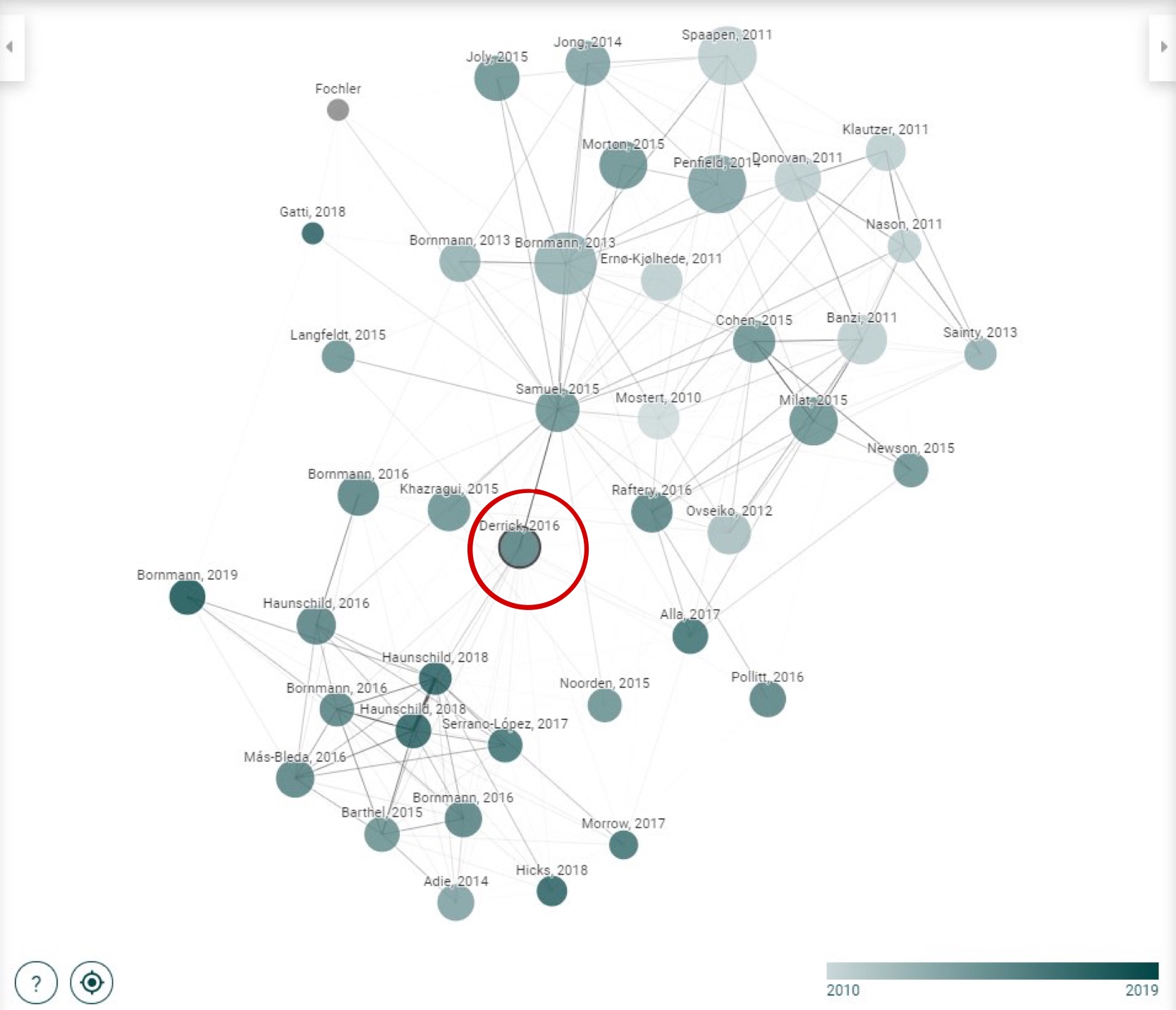Surveying the literature is a task with which all researchers are familiar. A common approach is to start from a known relevant article, identified either on the basis of a keyword search or a recommendation, and then to work 'outwards' from it by looking at the reference list and cited papers. This works well enough, but I recently came across1 a new tool - Connected Papers - which adds a new and different dimension to literature searching.
As explained in a post announcing its launch, Connected Papers surfaces articles related to one another, not through direct citation/referencing relationships, but as a result of articles having references or citations in common. The related articles are presented visually, clustered based on their relatedness, and coloured based on their year of publication. The service also provides lists of 'prior' and 'derivative 'works. Prior works are those articles that are cited by many of the related cluster, and this list is a useful place to look for key (or at least widely cited) contributions to the area. Derivative works are articles that cite many of the related cluster, and is the place to find current thinking in the area or recent review articles. Of course, the usual limitations of citation based tools apply: the tool only works for journal articles and is limited in its disciplinary coverage. Nonetheless in experimenting with Connected Papers over the last few weeks I have found it a useful tool to find new articles on topics that I am researching.
The best way to illustrate the tool is with an example. The image below shows the graph generated using an article written by Gemma Derrick and Gabrielle Samuel on impact evaluation in the 2014 Research Excellence Framework (REF)2.

I have added a red circle to indicate the paper used to generate the graph. To the 'north' there is a cluster of papers concerned with the assessment of research impact, including two key review articles (Bornman, 2013 and Penfield, 2014), and some contributions to impact assessment that are distinct from the approach taken in the REF (Spaapen, 2011 and Joly, 2015). The more 'north east' part of this cluster contains contributions to impact assessment specifically in the health research area, in which a lot of the earlier thinking for research impact evaluation was carried out. The cluster to the 'south west' of the central paper represents the emerging literature on the potential (or not) for alternative metrics to capture research impact. The full interactive version of the graph, including the prior and derivative works, can be explored by clicking here.
I know the field of research impact evaluation reasonably well, so this graph did not generate any surprises for me in terms of work I had not previously come across. As an introduction to the field, however, I think Connected Papers represents a very slick way of going from one article to understanding the broader landscape.
-
How I came across Connected Papers is itself an interesting story of serendipity. Over the last few months I have been using the personal knowledge management and note taking app, Roam. While reading a blog post on using Roam, I spotted a reference to Connected Papers in an image illustrating the post. ↩
-
The paper used is Derrick, G. E., & Samuel, G. N. (2016). The Evaluation Scale: Exploring Decisions About Societal Impact in Peer Review Panels. Minerva, 54(1), 75–97. https://doi.org/10.1007/s11024-016-9290-0 ↩
